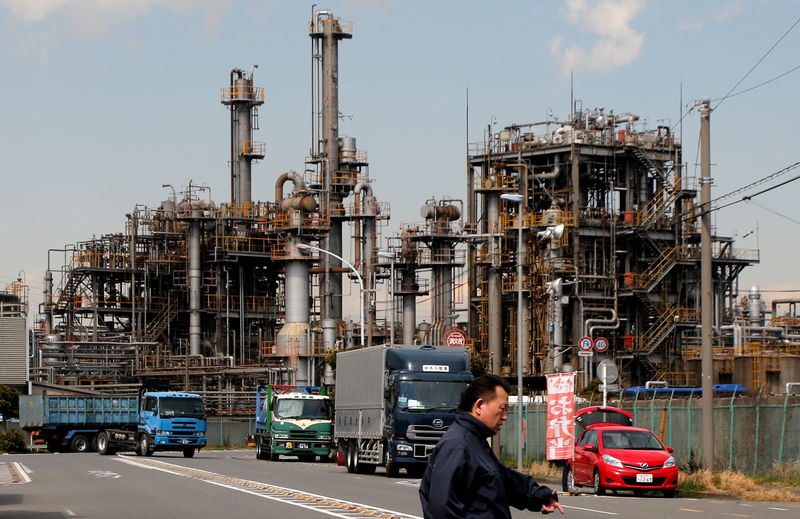 © Reuters. FILE PHOTO: Worker walks near a factory at the Keihin industrial zone in Kawasaki
© Reuters. FILE PHOTO: Worker walks near a factory at the Keihin industrial zone in KawasakiBy Stanley White
TOKYO (Reuters) – Slowing production of cars and electronics in January tipped Japan’s industrial output into its biggest tumble since a devastating earthquake in March 2011, highlighting a weakening in demand and a build up of inventory.
January’s results and a trade ministry compilation of company forecasts for output in February and March suggest that Japan’s economy will expand more slowly this year, adding to pressure on policymakers to find new ways to stimulate growth.
Reduced industrial production could also make companies and politicians more sensitive to gains in the yen, which eat into exporters’ profits and make companies less likely to invest. “Electronic parts and devices makers have entered an inventory-adjustment phase,” said Hiroaki Muto, economist at Tokai Tokyo Research Center.
“Japan’s economy will grow this year, but not nearly as fast as it did last year. Japan’s government will try to stop the yen from rising, but they also have to worry about trade friction.”
Trade ministry data out on Wednesday showed factory output fell 6.6 percent in January from the previous month.
This was the biggest decline since a 16.5 percent fall in March 2011 and more than economists’ median estimate of a 4.2 percent drop. Output rose 2.9 percent in December.
Output of cars and trucks fell by 14.1 percent in January because of weaker exports to the United States, a trade ministry official told reporters.
Car output also fell because severe snowstorms in January delayed deliveries of parts, the official said.
Production of construction equipment fell 7.8 percent, while output of electronic parts and devices fell 6.3 percent to adjust for high inventories.
Manufacturers surveyed by the trade ministry expect output to rise 9.0 percent in February but fall 2.7 percent in March.
Companies expect output of capital goods to fall 8.0 percent in March, while the trade ministry downgraded its assessment of production to say it is only “gradually recovering”.
On the whole the data suggests the economy may face a bumpier ride than in the past two years, further undermining efforts by the Bank of Japan to boost inflation to its elusive 2 percent target.
Japan’s economy had grown modestly for eight straight quarters by end-2017, its longest continuous expansion since the 1980s boom, slowly moving Prime Minister Shin Abe’s revival plan closer to vanquishing decades of stagnation.
Consumer spending, exports, and capital expenditure have helped to drive Japan’s growth, but economists say consumer spending could lose some momentum this year although they expect exports to remain strong thanks to sustained global demand.
Fusion Media or anyone involved with Fusion Media will not accept any liability for loss or damage as a result of reliance on the information including data, quotes, charts and buy/sell signals contained within this website. Please be fully informed regarding the risks and costs associated with trading the financial markets, it is one of the riskiest investment forms possible.
Source: Investing.com





























